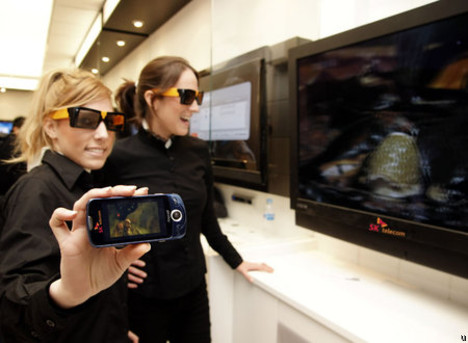
Samsung’s 3D TV’s have now gone on sale, and they are accompanied by a lengthy warning about associated health risks. Clearly the company is trying to cover their bases just in case anything, and we mean, anything, could go haywire.
From Samsung’s official statement:
“If you experience any of the following symptoms, immediately stop watching 3D pictures and consult a medical specialist: (1) altered vision; (2) lightheadedness; (3) dizziness; (4) involuntary movements such as eye or muscle twitching; (5) confusion; (6) nausea; (7) loss of awareness; (8) convulsions; (9) cramps; and/or (10) disorientation. Parents should monitor and ask their children about the above symptoms as children and teenagers may be more likely to experience these symptoms than adults.”
Among the most high risk groups that Samsung points out are: pregnant women, young children, teens, the elderly, people prone to seizures or stroke, people prone to dizziness or motion sickness, people with eye problems, people who are out of shape, and people who have been drinking.
So….who does that leave exactly? And what will the fallout be for the potential 3D gaming industry?
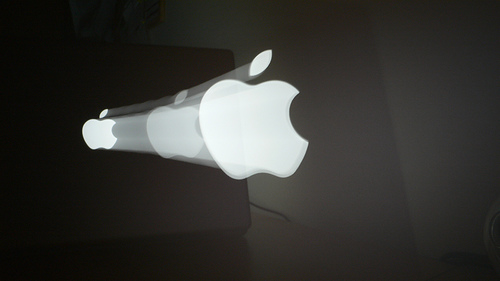
Apple has submitted a patent application that confirms they are venturing into the budding 3D world.
The plan is to launch a pair of 3D glasses that will provide high-definition 3D video to users on their little Apple product screens. iPhones, iPads, and iPads.
Already nicknamed “iSpecs” by Apple fans, will allow users to slot their Apple iPod or iPhone into it and then the headset uses presumably active shutter technology for 3D viewing.
The device is also mounted with an external camera and infrared sensor, the patent said, meaning that a live video stream of the view in front of the glasses could be automatically displayed if someone approached the wearer.

Japanese electronics company Sharp has recently announced that they have developed a new 3D touchscreen LCD that doesn’t require special 3D glasses.
They were able to develop the 3D screens without the need for glasses by using parallax barriers. And what does that mean? Both transmissive and non-transmissive columns are used to trick the brain’s visual cortex into see three dimensions when viewed from different angles. I know – my brain hurts too.
Sharp plans to begin mass production of the no-glasses 3D screen during the first half of 2010, with an unknown release date. The Japanese electronics company believes up to 50% of its screens can be 3D-enabled before 2012.
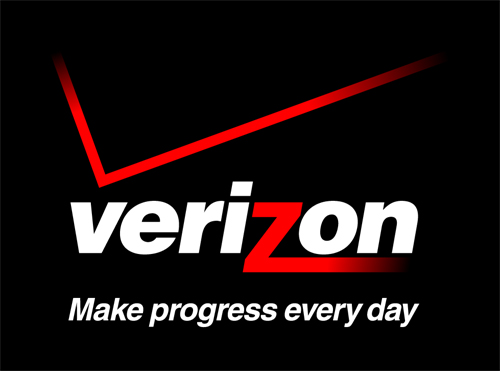
According to the latest Verizon press release, the company is planning on releasing a 3D package to its TV subscribers before the end of 2010. The 3D packages will compliment the SD and HD channels already available, and be available to the nearly 3 million customers, mostly located in the Northeast.
“The market for 3D TV is very early in its development. We’re monitoring the early sales of 3D TVs and expect to announce a 3D offering well in advance of the holiday TV-shopping season, when 3D television sales will expand,†Shawn Strickland, vice president of FiOS product management for Verizon said. “Verizon’s intent for our formal 3D offering is to be in the market in time for the holiday sales of 3D TVs, with a product worthy of our customers. Our goal is to offer a product that has a fully automated HDMI format-switching capability that switches between 2D and 3D, not via ponderous access to the TV’s setup menu. By then, we expect to have access to good 3D content and to have chosen our mode of delivery, whether full-time or part- time broadcast service, or via video on demand and to what measure as pay-per-view material.â€
Verizon hasn’t released details like pricing or package structure yet. Specifics will likely wait until more 3D TVs are on the market, and a more realistic projection of the 3D TV industry can be figured out.
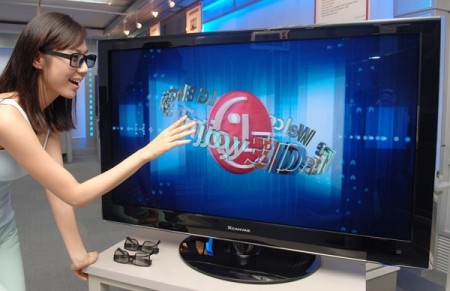
LG is a huge player in the entertainment tech market, but hadn’t been saying much about their 3D TV plans. That didn’t mean they didn’t have any though! The LG LX9500 3DTV will be launching in late spring and it is going to be the world’s first full LED 3D TV which comes in a choice of two sizes, the 47 inch and 55 inch.
The viewer will have to wear AG-S100 shutter glasses, which block each lens alternately in time with with the screen’s refresh rate, to benefit from the 3D effect.
There hasn’t been a great deal of information regarding the specs of the TV, although it is known that there will be around 1200 LEDs, a dynamic contrast ratio of 10,000,000:1 and a refresh rate registered at 240 Hz.

Theaters owned by Regal Entertainment Group, Cinemark Holdings and AMC Entertainment will raise 3D ticket prices higher, with the percentage increase set to vary depending upon the market. IMAX 3D screenings will most definitely be rising as well.
The Wall Street Journal reports on the price hikes, which are significant in some areas. The primary showings affected are 3D, but some standard presentations will now be slightly more expensive, as well. As an example, the paper says,
“At some theaters in the northwest, adult admission is rising to $11 from $10 for a conventional film, to $15 from $13.50 for a regular 3-D showing and to $17 from $15 for Imax 3-D.”

Buck Rogers would definitely benefit from a remake, but from Paul WS Anderson? No thanks. The guy is like kryptonite to good action movies (Resident Evil, Aliens Vs. Predators, and most most recently a remake of Death Race.) Iron Man screenwriters Art Marcum and Matt Holloway will write the script.
The Buck Rogers rights are controlled by Paradox, the company doing the new Conan the Barbarian with Marcus Nispel directing. Paradox will finance the Buck Rogers development, and Anderson’s longtime partner, Jeremy Bolt, is producing with Fredrik Malmberg,with Larry Abramson and George Furla.
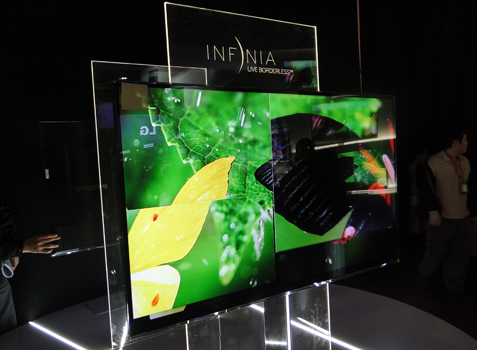
LG, the second biggest TV brand, said it is aiming to sell nearly 1 million 3D TVs this year to take 25% of the market, joining a growing number of companies investing their hopes in that 3D will become the next big then.
South Korea’s LG Electronics said on Thursday it wanted to increase market share in 3D TVs more aggressively, hoping to keep its lead over Sony and combat falling prices with premium models.
“Our goal is boosting market share in 3D TVs and you can clearly see that, as our target for 3D market share is 10 percentage points above our LCD TV sales target,” Havis Kwon, LG’s vice president and head of the LCD division told reporters.
LG, which competes with Samsung and Sony, said it expected the global 3D TV market to grow to around 3.8 million units this year and to more than 13 million in 2011.

I love Robert Altman’s Popeye film, so I’m not that excited at the prospect of Sony scraping the old idea barrel to come up with this. I can just picture the suits sitting around the “idea table” and coming up with “awesome 3D ideas!” Someone probably said that having a person repeatedly punch at the audience would be cool – and the idea of punching led to Popeye.
In any case, screenwriter Mike Jones (The Minotaur Takes a Cigarette Break) is currently in negotiations to adapt the movie, and according to him, he’s “an unabashed, lifelong Popeye fan, and introducing this squinty-eyed sailor to a new generation also means reintroducing him to those who, like me, grew up with him.”
We’ll see, Mr. Mike Jones and Sony. We’ll see.

Nintendo is having its go at the exploding 3D market with their new DS handheld gaming system. The gaming industry giants just announced that its next handheld will be using 3D technology, and the kicker? It won’t require the user to wear 3D glasses to experience the effects of the 3D.
The Nintendo 3DS will work without glasses, although exactly how hasn’t yet been revealed by the wizards of Nintendo.
The expected aunch of the handheld 3DS is planned for this, sometime before April 2011, and it’s expected to be officially unveiled at the E3 games show in June.










